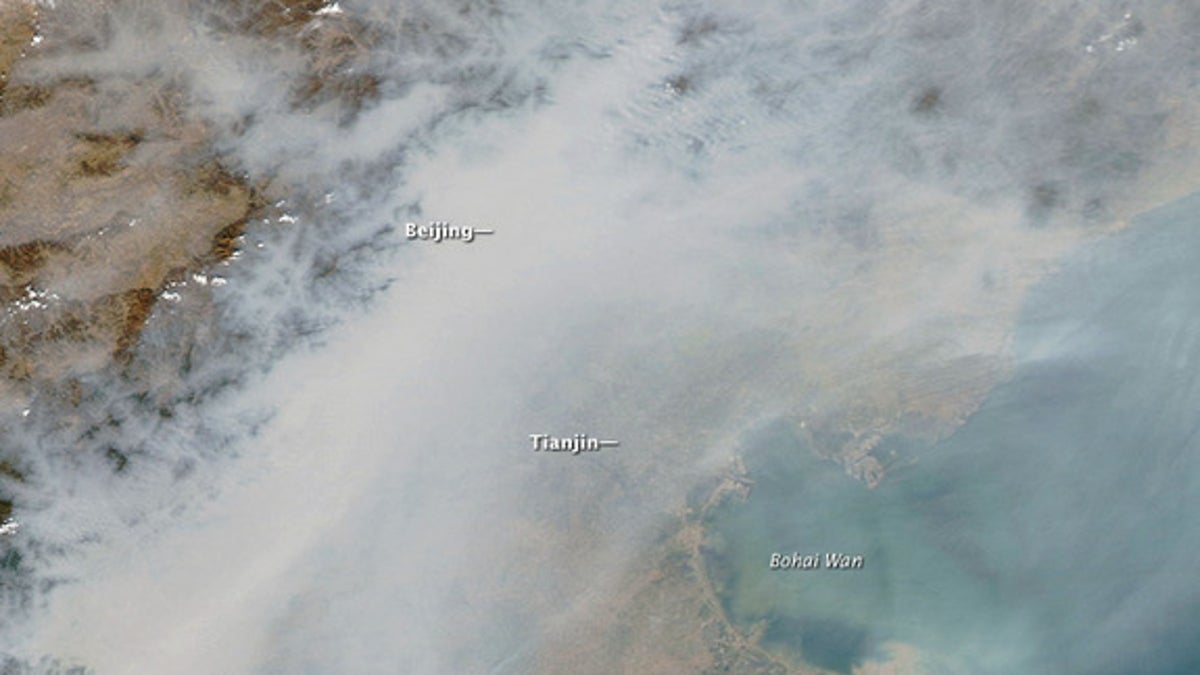
Beijing was completely obscured by air pollution on Oct. 9, 2010. (NASA Earth Observatory)
Pollution from China's coal-burning power plants is pumping up winter storms over the northwest Pacific Ocean and changing North America's weather, a new study finds.
Northwest Pacific winter storms are now 10 percent stronger than they were 30 years ago, before Asian countries began their industrial boom, according to research published April 14 in the Proceedings of the National Academy of Sciences.
North America will be hardest hit by the intensifying storms, which move from west to east, said lead study author Yuan Wang, an atmospheric scientist at NASA's Jet Propulsion Laboratory in Pasadena, Calif.
"The increasing pollution in Asian countries is not just a local problem, it can affect other parts of the world," Wang told Live Science.
Aerosol emissions have rapidly increased in Asia in recent decades. For example, China is now the world's largest coal consumer, and in Beijing, air pollution levels have soared 400 times higher than World Health Organization limits. In contrast, aerosols from North America and Europe have meanwhile decreased, because of clean air regulations.
[China's Top 6 Environmental Concerns]
Wang and his co-authors examined how the tiny pollution particles in Asia play a role in cloud formation and the storms that spin up each winter east of Japan, in a cyclone breeding ground north of 30 degrees latitude. Monsoon winds carry aerosols from Asia to this storm nursery in the winter.
The researchers created a computer model of six kinds of aerosol pollution and tested their effects on clouds, precipitation and global weather patterns. Different aerosols affect storms in varying ways, such as by blocking the sun's radiation or providing a nucleus around which water vapor can condense to form raindrops.
The new study finds that sulfate aerosols are among the most important drivers of Pacific storms, by encouraging more moisture to condense in clouds, Wang said.
Pollution from Asia is also changing weather patterns over North America, Wang added.
Wang said this winter's unusually cold weather east of the Rocky Mountains could have been influenced by pollution-driven cyclones and high-pressure systems in the northern Pacific. These Pacific weather patterns caused swoops in the jet stream that drove cold air south across the central and eastern United States the so-called polar vortex. The same weather patterns are linked with record-high temperatures in Alaska this winter.
"This cold winter in the U.S. probably had something to do with stronger cyclones over the Pacific," Wang said.
The researchers are testing more sophisticated computer models to better understand the effects of stronger storms and increasing pollution on global weather patterns, Wang said.
